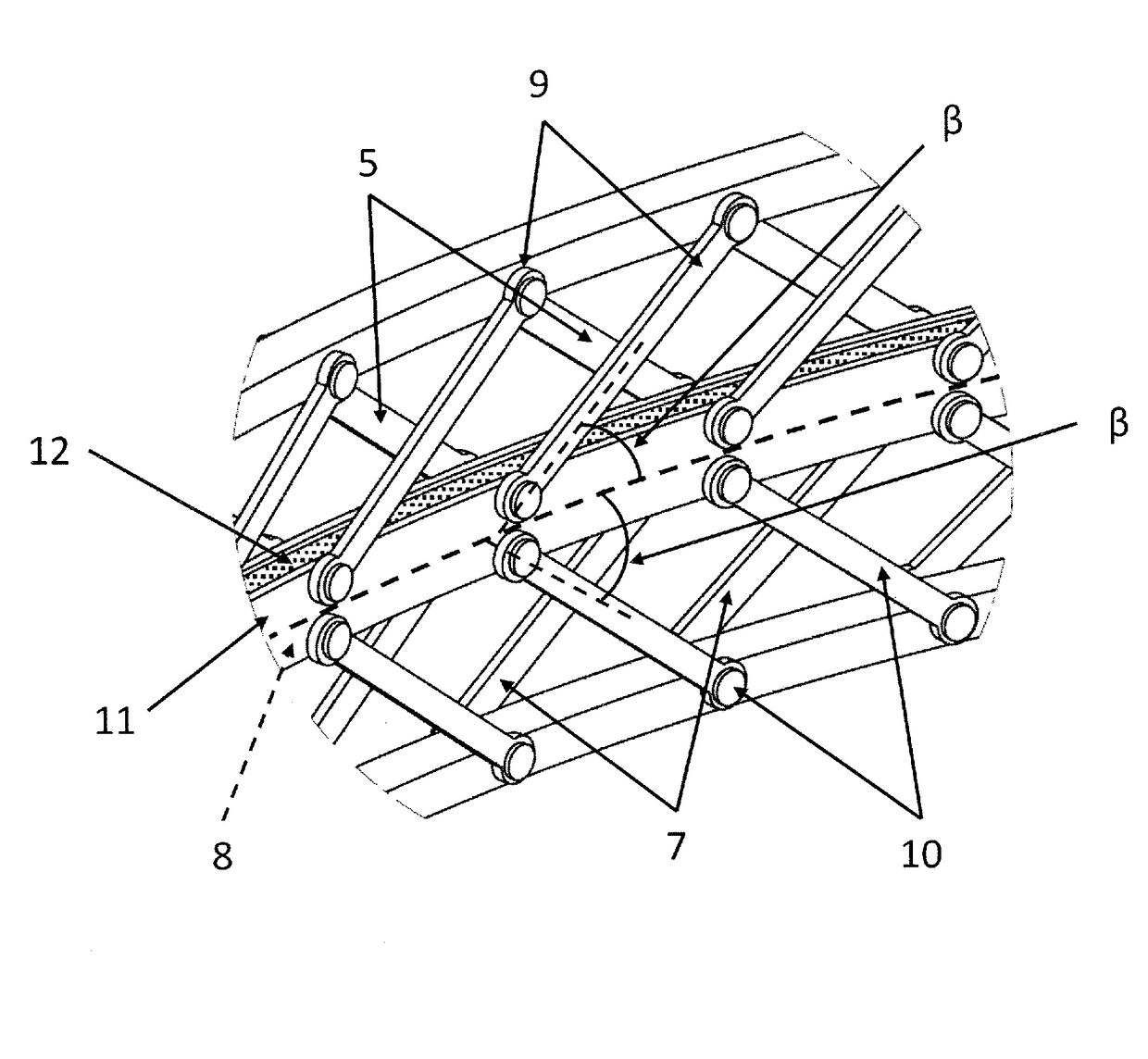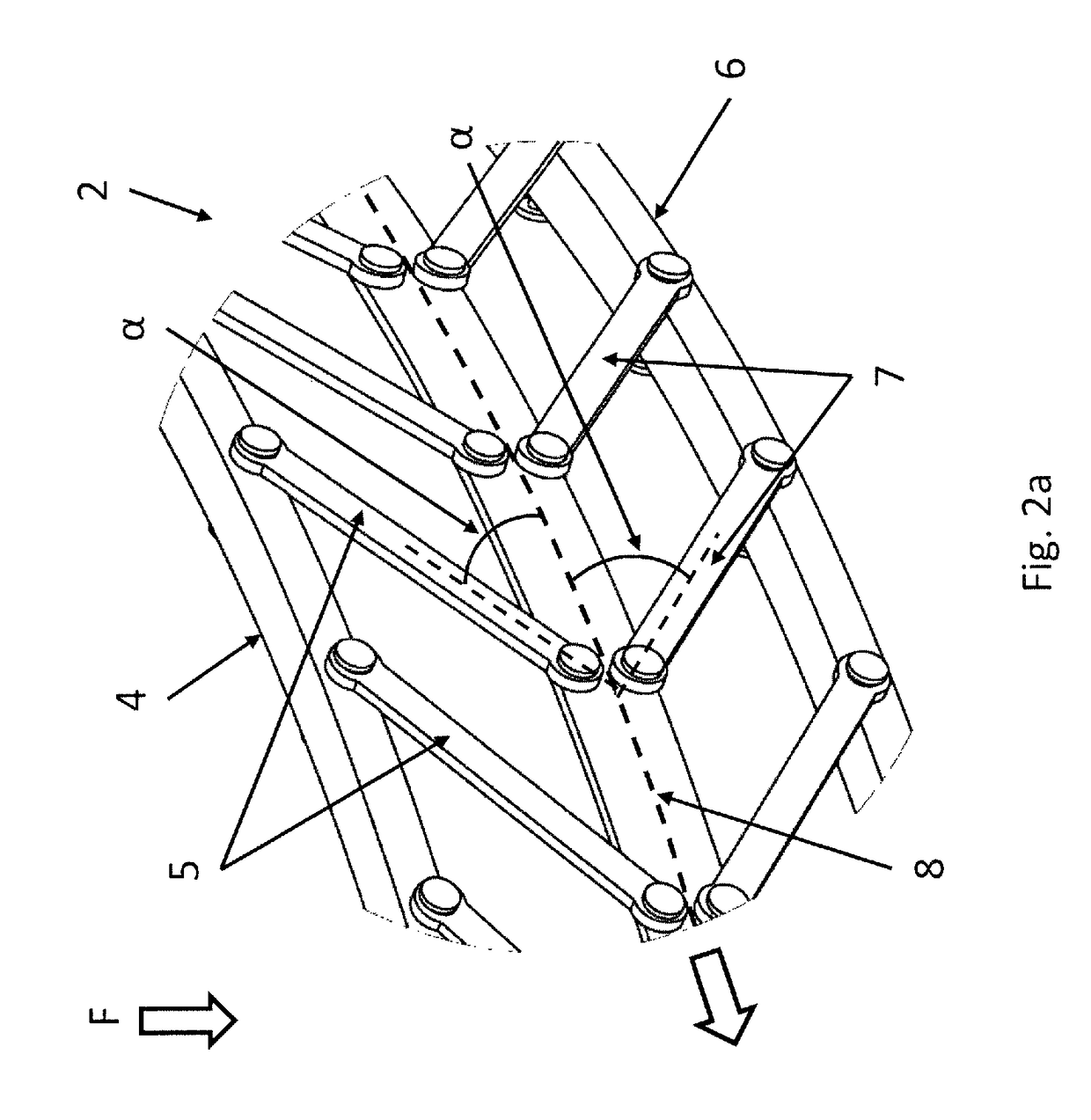Shock damping element
a technology shock damping element, which is applied in the direction of vibration dampers, cosmonautic components, cosmonautic parts, etc., can solve the problems of limiting the use of today's solutions, and achieve the effects of enhancing the damping effect of axial forces, increasing damping efficiency, and enhancing the damping effect of shock damping elemen
- Summary
- Abstract
- Description
- Claims
- Application Information
AI Technical Summary
Benefits of technology
Problems solved by technology
Method used
Image
Examples
Embodiment Construction
[0038]FIG. 1 schematically shows a first example of a shock damping element 1. In the first example, the shock damping element 1 comprises a first shock damping structure 2 and a second shock damping structure 3. The first shock damping structure 2 comprises a first circumferential support member 4 and a multitude of first elements 5. The first shock damping structure 2 further comprises a second circumferential support member 6 and a multitude of second elements 7. The first elements 5 and the second elements 7 are located at opposite sides of a first central member 8, e.g. above and below in a vertical direction. The first elements 5 in this example comprises links being rotatably connected at a first end to the first circumferential support member 4 and at a second end to the first central member 8. The second elements 7 in this example comprise links being rotatably connected at a first end to the second circumferential support member 6 and rotatably connected at a second end to...
PUM
 Login to View More
Login to View More Abstract
Description
Claims
Application Information
 Login to View More
Login to View More - R&D
- Intellectual Property
- Life Sciences
- Materials
- Tech Scout
- Unparalleled Data Quality
- Higher Quality Content
- 60% Fewer Hallucinations
Browse by: Latest US Patents, China's latest patents, Technical Efficacy Thesaurus, Application Domain, Technology Topic, Popular Technical Reports.
© 2025 PatSnap. All rights reserved.Legal|Privacy policy|Modern Slavery Act Transparency Statement|Sitemap|About US| Contact US: help@patsnap.com



